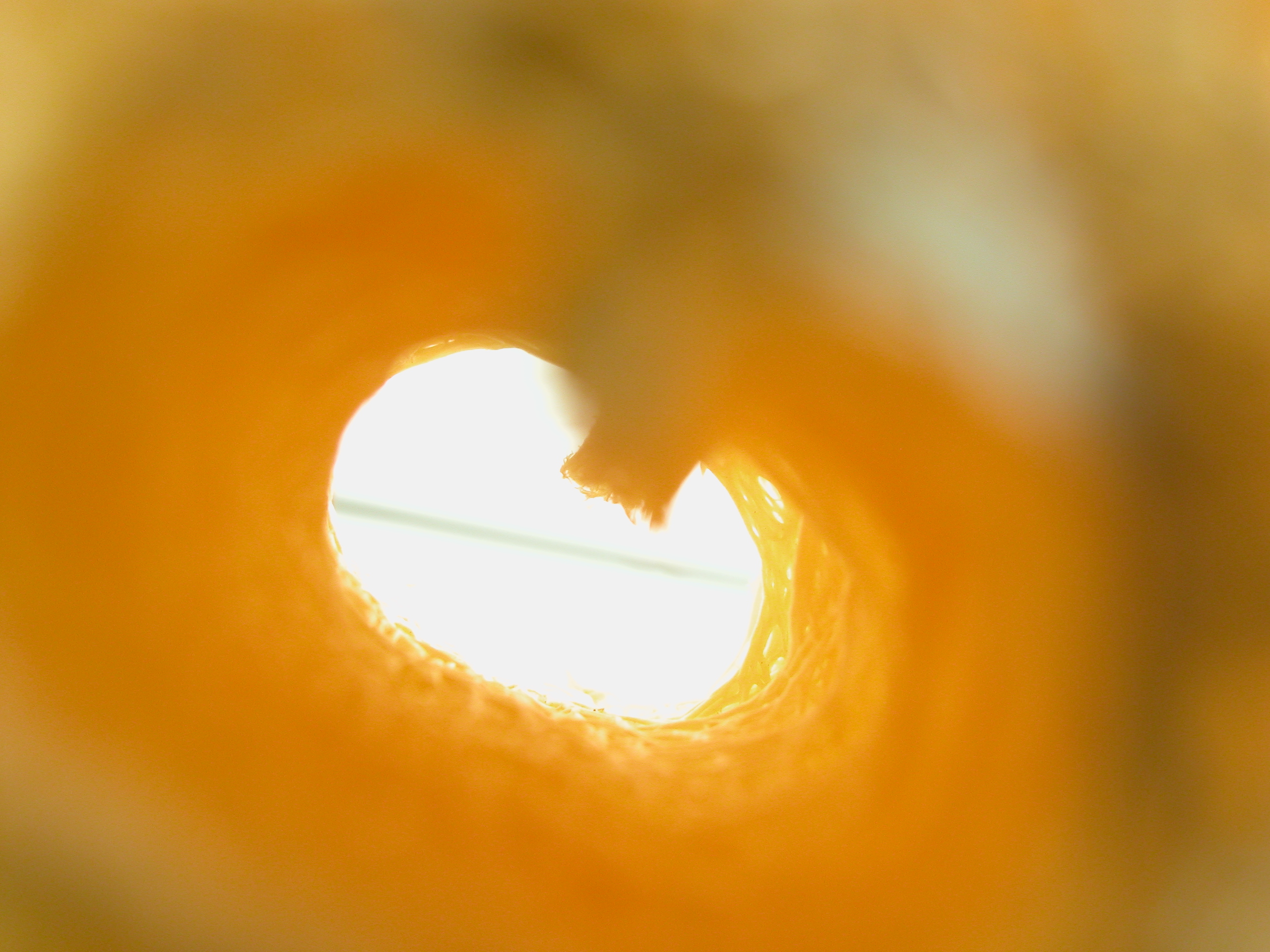 Sacks used Dayun and Sripichitt’s hybrid plant to develop a breeding population. In 1995, Dr. Erik Sacks took the helm of a brand new perennial rice breeding program at the International Rice Research Institute (IRRI) within the Philippines. In 2007, Erik Sacks knowledgeable Land Institute researchers of the perennial rice venture and of Dr. Hu’s analysis. Dr. Sacks returned to the U.S. University of Illinois in Urbana-Champaign whereas Fengyi Hu returned to Beijing, China to pursue his Ph.D. Considerable progress was made underneath Sack’s supervision over the following six years, throughout which time a Masters pupil from China named Fengyi Hu joined his lab to work on perennial rice. Evolution is a change in allele frequency in a inhabitants over a time period (Skelton, 1993; Strickberger, 1996). A population is a group of individuals of the same species in a given area whose members can interbreed and hence share a common group of genes often known as a gene pool.
Sacks used Dayun and Sripichitt’s hybrid plant to develop a breeding population. In 1995, Dr. Erik Sacks took the helm of a brand new perennial rice breeding program at the International Rice Research Institute (IRRI) within the Philippines. In 2007, Erik Sacks knowledgeable Land Institute researchers of the perennial rice venture and of Dr. Hu’s analysis. Dr. Sacks returned to the U.S. University of Illinois in Urbana-Champaign whereas Fengyi Hu returned to Beijing, China to pursue his Ph.D. Considerable progress was made underneath Sack’s supervision over the following six years, throughout which time a Masters pupil from China named Fengyi Hu joined his lab to work on perennial rice. Evolution is a change in allele frequency in a inhabitants over a time period (Skelton, 1993; Strickberger, 1996). A population is a group of individuals of the same species in a given area whose members can interbreed and hence share a common group of genes often known as a gene pool.
Strickberger W (1996) Evolution. When, almost one hundred fifty years in the past, Charles Darwin made public his principle of evolution by pure choice, the concept had one critical weakness. By engaging on this exercise, college students will achieve insight right into a population at equilibrium and into natural selection as a drive for biological adaptation. In 1908, Hardy and Weinberg constructed a mannequin of a inhabitants that was not evolving, and laid out the situations by which such a inhabitants would exist (Abedon, 2005): a big population size with no migration, no mutation, no natural selection, and random mating. 7. Count the number of buttons in each group and divide this quantity by two so as to keep up the population size at 64. Otherwise, your population will develop exponentially! Yearly since 2008, two or three researchers from The Land Institute have joined a highly devoted worldwide group of researchers who visit Dr. Hu’s team in the Yunnan Province to observe progress and offer advice and encouragement. Some perennial rice fields have persisted, flowered, and regrown 6 times (2 harvests per year for three years). Nearly all of this land is in the Yunnan Province of China where the crop was developed, but profitable take a look at fields have also been established in Laos, Cambodia, Myanmar, and Vietnam.
Inspired by the potential for a perennial rice to handle the devastating soil erosion that plagues upland rice fields throughout Southeast Asia, The Land Institute provided start-up funds for Fengyi Hu to reactivate the perennial rice breeding program, and has continued to assist Dr. Hu’s work both financially and with expertise. Important initial work on perennializing rice took place within the early nineties when Dr. Tao Dayun of the Yunnan Academy of Agricultural Sciences along with Prapa Sripichitt of Kasetsart University in Bangkok, Thailand efficiently produced a single hybrid plant from cross pollinating Oryza sativa and O. longistaminata. 1. Place sixteen black/black, 32 black/white, and 16 white/white buttons in a box. 10. Put the buttons representing the first offspring generation again into the field. Note: The scholars would possibly find that, in some rounds, there is a single unpaired button left within the box after selecting pairs of buttons. I know the way to resolve Hardy-Weinberg issues and can clarify the procedures to students however…
2/3. Multiply the quantity of each genotype by 2/3. The sum of the outcomes should be 64. If multiplication produces a decimal number, you can increase or decrease a fraction to the following whole number to make the sum of all genotypes equal to 64. Write the quantity of every genotype in Table 3 within the genotype columns. Counting Buttons is an instance of how to show biology in an built-in style and to make use of mathematics to make sense of complex biological phenomena. Counting Buttons is a straightforward and concrete approach to exhibit the Hardy-Weinberg precept. This ingenious idea for lively learning of a seemingly summary idea simulates how the Hardy-Weinberg principle applies to both a stable and an evolving population. Will a dominant allele of a trait all the time have the highest frequency in a inhabitants and a recessive allele all the time have the lowest frequency? This remaining button must be removed from the inhabitants because it doesn’t have a chance to mate with different individuals. Each gene pool comprises all alleles for all characteristics of all people. For about six years the perennial rice breeding program was suspended, however after completing his Ph.D., Dr. Hu took a position on the Yunnan Academy of Agricultural Sciences the place he and his group used the prevailing perennial hybrid rice to conduct important analysis on rhizomes and the genetic foundation of perennialism.
 International college students appropriate correct right here pay solely 6,000 THB to 10,000 THB yearly for his or her grasp’s diploma. With a fashionable 3 semester program improvement, Stamford’s school college students can earn a Bachelor’s Degree in 3.5 years and Master’s Degree in 1 12 months or 18 months. Private institutions are a great way to succeed in your educational targets and get that nicely-deserved diploma. Private institutions are an environment friendly way to attain your tutorial targets and get that correctly-deserved diploma. Graduates with PhD diploma in Web design can uncover positions in rapidly rising industries paying homage to internet designer, developer, and others. You can create a draft and submit it for assessment or request that a redirect be created, however consider checking the search outcomes below to see whether or not the subject is already covered. Where can a PhD in Web Design uncover a spot? When visiting Bangkok, along with rising your skills and instructional knowledge, you’ll develop to be part of a model new system and society that may open and enrich your cultural horizons. Furthermore, chance is you’ll choose actually one in each of eight Bachelor options in Design at eight universities, 2 Master packages in Design at 2 universities, and 1 PhD program in Design at 1 college.
International college students appropriate correct right here pay solely 6,000 THB to 10,000 THB yearly for his or her grasp’s diploma. With a fashionable 3 semester program improvement, Stamford’s school college students can earn a Bachelor’s Degree in 3.5 years and Master’s Degree in 1 12 months or 18 months. Private institutions are a great way to succeed in your educational targets and get that nicely-deserved diploma. Private institutions are an environment friendly way to attain your tutorial targets and get that correctly-deserved diploma. Graduates with PhD diploma in Web design can uncover positions in rapidly rising industries paying homage to internet designer, developer, and others. You can create a draft and submit it for assessment or request that a redirect be created, however consider checking the search outcomes below to see whether or not the subject is already covered. Where can a PhD in Web Design uncover a spot? When visiting Bangkok, along with rising your skills and instructional knowledge, you’ll develop to be part of a model new system and society that may open and enrich your cultural horizons. Furthermore, chance is you’ll choose actually one in each of eight Bachelor options in Design at eight universities, 2 Master packages in Design at 2 universities, and 1 PhD program in Design at 1 college.
 Students making use of to ISEP should apply for an Exchange possibility (in any nation) as a major totally different nonetheless could apply to a Direct different as a once more-up. Andreas Kopp loves devices, machines, leds, pixelart and spends most his time designing, making and repairing points with or with out machines and works on tasks serving to to strengthen and institutionalize the maker motion. Deposits to completely different packages, if required, are paid by the scholar to the host program, and might sound as a credit score rating score ranking in your analysis abroad time period invoice from the College. Students that require transcripts for graduation at their residence college are strongly instructed to affirm with their registrar’s workplace that this timeframe won’t impression their functionality to graduate on time. Through the years, Thammasat school school college college students have been identified for his or her activism and have performed a significant operate in Thai politics. Students are doubtless to notice a marked distinction in lecture type and evaluation between their residence universities and Thammasat. Rattana Bundit University is a non-public institute that targets at providing prime high quality schooling and selling analysis and innovation. Previously often known as Thonburi College of Technology and renamed to its present title in 2007, Thonburi University presents quite a lot of undergraduate and graduate programs.
Students making use of to ISEP should apply for an Exchange possibility (in any nation) as a major totally different nonetheless could apply to a Direct different as a once more-up. Andreas Kopp loves devices, machines, leds, pixelart and spends most his time designing, making and repairing points with or with out machines and works on tasks serving to to strengthen and institutionalize the maker motion. Deposits to completely different packages, if required, are paid by the scholar to the host program, and might sound as a credit score rating score ranking in your analysis abroad time period invoice from the College. Students that require transcripts for graduation at their residence college are strongly instructed to affirm with their registrar’s workplace that this timeframe won’t impression their functionality to graduate on time. Through the years, Thammasat school school college college students have been identified for his or her activism and have performed a significant operate in Thai politics. Students are doubtless to notice a marked distinction in lecture type and evaluation between their residence universities and Thammasat. Rattana Bundit University is a non-public institute that targets at providing prime high quality schooling and selling analysis and innovation. Previously often known as Thonburi College of Technology and renamed to its present title in 2007, Thonburi University presents quite a lot of undergraduate and graduate programs. It has been republished right here below the Attribution-NoDerivatives 4.Zero International (CC BY-ND 4.0) Creative Commons license. The projects studied were all established throughout the past decade as collaborations between nationwide and local authorities departments, Thai academics and local communities, and the assessment report was produced in partnership with the German worldwide growth company (GIZ) and the UN Environment Programme’s World Conservation Monitoring Centre (UNEP-WCMC). A brand new report assesses the efficacy of two nature-based mostly approaches to water management in Thailand, which symbolize a step away from the country’s usually top-down, hard-engineering method and current a number of advantages to the environment and communities. Can nature-primarily based water administration solutions help Thailand in adapting extra effectively to climate change? She stated she wish to see nature-primarily based approaches characteristic more prominently in personal sector investments, which may result in extra equitable financing and scalable initiatives: “Water cannot be managed by the federal government alone,” she stated. “It was straightforward to get folks to participate as a result of folks could clearly see the advantage of the dwelling weir construction,” Chaiwat said. Along with authorities-led schemes, ecosystem-primarily based measures may also empower small-scale farmers and local communities to manage impending climate risks, in keeping with Chaiwat Rongsayamanont, associate professor at Prince of Songkhla University in the city of Hat Yai and a contributor to the report.
It has been republished right here below the Attribution-NoDerivatives 4.Zero International (CC BY-ND 4.0) Creative Commons license. The projects studied were all established throughout the past decade as collaborations between nationwide and local authorities departments, Thai academics and local communities, and the assessment report was produced in partnership with the German worldwide growth company (GIZ) and the UN Environment Programme’s World Conservation Monitoring Centre (UNEP-WCMC). A brand new report assesses the efficacy of two nature-based mostly approaches to water management in Thailand, which symbolize a step away from the country’s usually top-down, hard-engineering method and current a number of advantages to the environment and communities. Can nature-primarily based water administration solutions help Thailand in adapting extra effectively to climate change? She stated she wish to see nature-primarily based approaches characteristic more prominently in personal sector investments, which may result in extra equitable financing and scalable initiatives: “Water cannot be managed by the federal government alone,” she stated. “It was straightforward to get folks to participate as a result of folks could clearly see the advantage of the dwelling weir construction,” Chaiwat said. Along with authorities-led schemes, ecosystem-primarily based measures may also empower small-scale farmers and local communities to manage impending climate risks, in keeping with Chaiwat Rongsayamanont, associate professor at Prince of Songkhla University in the city of Hat Yai and a contributor to the report.
 Community-led development groups built the weirs by laying bamboo grids across the width of the watercourses. Furthermore, the report raised concerns over pollution related to disintegration of non-biodegradable sandbags used to infill among the weirs. “Last year during flooding, we confronted the backwater that caused rotten grass and rotten hay so the fish had been gone from the area,” a villager from Ban Krang subdistrict in Phitsanulok province advised the report authors. But as climate change continues to convey extreme weather events that exacerbate floods and droughts, Thailand’s farmers, communities and policymakers are facing the challenge of the way to handle water sustainably. A serious stumbling block is Thailand’s “fragmented” water management policy framework, in response to Aksara from Chulalongkorn University. They then infilled the bamboo buildings with pure materials to kind a low dam, or weir, that raises the level of the water upstream and somewhat regulates the move downstream. Nature-based mostly solutions that incorporate the natural processes of the country’s considerable rivers, floodplains and watershed forests are starting to be trialed by way of numerous tasks at massive and small scales. Multiple competing calls for have remodeled the Yom River in current decades: its floodplain has been largely deforested for rice cultivation and its pure seasonal circulate modified by a slew of flood management and irrigation infrastructure.
Community-led development groups built the weirs by laying bamboo grids across the width of the watercourses. Furthermore, the report raised concerns over pollution related to disintegration of non-biodegradable sandbags used to infill among the weirs. “Last year during flooding, we confronted the backwater that caused rotten grass and rotten hay so the fish had been gone from the area,” a villager from Ban Krang subdistrict in Phitsanulok province advised the report authors. But as climate change continues to convey extreme weather events that exacerbate floods and droughts, Thailand’s farmers, communities and policymakers are facing the challenge of the way to handle water sustainably. A serious stumbling block is Thailand’s “fragmented” water management policy framework, in response to Aksara from Chulalongkorn University. They then infilled the bamboo buildings with pure materials to kind a low dam, or weir, that raises the level of the water upstream and somewhat regulates the move downstream. Nature-based mostly solutions that incorporate the natural processes of the country’s considerable rivers, floodplains and watershed forests are starting to be trialed by way of numerous tasks at massive and small scales. Multiple competing calls for have remodeled the Yom River in current decades: its floodplain has been largely deforested for rice cultivation and its pure seasonal circulate modified by a slew of flood management and irrigation infrastructure. An enormous proportion of English language learners are within the expanding circle of world English and lacking the language atmosphere to practice English. Keywords: Bilingual Education, English As a Foreign Language, Graduate Students Perception, Multilingualism, Pedagogical Translanguaging. Additionally, the interview was performed by six college students with a bilingual schooling background. This research was carried out at a world
An enormous proportion of English language learners are within the expanding circle of world English and lacking the language atmosphere to practice English. Keywords: Bilingual Education, English As a Foreign Language, Graduate Students Perception, Multilingualism, Pedagogical Translanguaging. Additionally, the interview was performed by six college students with a bilingual schooling background. This research was carried out at a world  It offers most likely the greatest and most partaking enterprise programs and is the first college in Thailand to be accredited by the International Accreditation Council for Business Education (IACBE).
It offers most likely the greatest and most partaking enterprise programs and is the first college in Thailand to be accredited by the International Accreditation Council for Business Education (IACBE). 
 Are there any free tuition universities in Bangkok? There are plenty of specialties to select from. Digital Marketing, Digital Marketing (Digital Entrepreneur & Brand Influencer), Logistics and Supply Chain Management, Logistics and Supply Chain Management (Digital Commerce Logistics), International Business Management, International Business Management (Chinese Business), Marketing, Finance, Management, Financial and Investment Planning, plus a global Marketing program are all obtainable and taught entirely in English. Management is the key to planning, organizing, leading and controlling an organization to efficiently reach its goals. With these expertise being critical in the expansion of a company, the event of management and management is vital for companies and micro companies alike. As it strives for modernization, the college additionally retains observe of being an excellent exemplar of sustainability amongst other establishments, adhering primarily to the UN’s sustainability targets. It solely takes about 10 minutes, together along with your photo being taken and a stamp in your passport to shut the deal. 1. Your actual Passport and one copy of your Passport.
Are there any free tuition universities in Bangkok? There are plenty of specialties to select from. Digital Marketing, Digital Marketing (Digital Entrepreneur & Brand Influencer), Logistics and Supply Chain Management, Logistics and Supply Chain Management (Digital Commerce Logistics), International Business Management, International Business Management (Chinese Business), Marketing, Finance, Management, Financial and Investment Planning, plus a global Marketing program are all obtainable and taught entirely in English. Management is the key to planning, organizing, leading and controlling an organization to efficiently reach its goals. With these expertise being critical in the expansion of a company, the event of management and management is vital for companies and micro companies alike. As it strives for modernization, the college additionally retains observe of being an excellent exemplar of sustainability amongst other establishments, adhering primarily to the UN’s sustainability targets. It solely takes about 10 minutes, together along with your photo being taken and a stamp in your passport to shut the deal. 1. Your actual Passport and one copy of your Passport. The agreement will create new opportunities for BUI students to join one in all six postgraduate taught programmes provided by Surrey’s School of Hospitality and Tourism Management. Because the site is without doubt one of the few empty land pieces in Bangkok University metropolis campus, Building will occupy maximum area for the location. They centered the design around an 180 square-meter wall -“Lo-Fi pixel wall” – with 10,000 custom-made rotating four-sided plastic items in pink, blue, green and yellow. The wall is used by students to create colour patterns or write messages. “We are hopeful that this partnership will encourage cross-cultural experiences, change of concepts, and collaboration that are essential to tutorial and professional accomplishments of our college students and workers. It’s also ranked as Thailand’s No. 1 university from numerous organizers corresponding to Center for World University Rankings, Round university rating, Academic Ranking of World Universities. “International educational cooperation is essential to capitalising on the possibilities of globalisation and achieving an institution’s targets. Furthermore, it will create a visible connection on the second and third flooring and a physical connection on the primary ground. To proceed the actions axis by curbed out some volume at the primary floor alongside the axis it’ll create new entry to the university.
The agreement will create new opportunities for BUI students to join one in all six postgraduate taught programmes provided by Surrey’s School of Hospitality and Tourism Management. Because the site is without doubt one of the few empty land pieces in Bangkok University metropolis campus, Building will occupy maximum area for the location. They centered the design around an 180 square-meter wall -“Lo-Fi pixel wall” – with 10,000 custom-made rotating four-sided plastic items in pink, blue, green and yellow. The wall is used by students to create colour patterns or write messages. “We are hopeful that this partnership will encourage cross-cultural experiences, change of concepts, and collaboration that are essential to tutorial and professional accomplishments of our college students and workers. It’s also ranked as Thailand’s No. 1 university from numerous organizers corresponding to Center for World University Rankings, Round university rating, Academic Ranking of World Universities. “International educational cooperation is essential to capitalising on the possibilities of globalisation and achieving an institution’s targets. Furthermore, it will create a visible connection on the second and third flooring and a physical connection on the primary ground. To proceed the actions axis by curbed out some volume at the primary floor alongside the axis it’ll create new entry to the university.

 The following species of chook can usually be discovered on campus all yr spherical: little cormorant, Javan pond-heron, little egret, black-crowned night heron, Asian openbill, white-breasted waterhen, bronze-winged jacana, rock pigeon, noticed dove, zebra dove, crimson collared dove, pink-necked inexperienced pigeon, plaintive cuckoo, common koel, better coucal, Indian roller, coppersmith barbet, Asian palm-swift, house swift, small minivet, common iora, streak-eared bulbul, yellow-vented bulbul, sooty-headed bulbul, giant-billed crow, oriental magpie-robin, pied fantail, black-collared starling, Asian pied starling, widespread myna, white-vented myna, plain prinia, widespread tailorbird, brown-throated sunbird, olive-backed sunbird, scarlet-backed flowerpecker, white-rumped munia, scaly-breasted munia, Eurasian tree sparrow, home sparrow, Java sparrow. Less common winter guests or passage migrants: Eurasian kestrel, dark-sided flycatcher, verditer flycatcher. Common winter (typically October-March) guests: Chinese pond-heron, intermediate egret, barn swallow (August-May), red-rumped swallow, blue-tailed bee-eater, red-breasted flycatcher, ashy drongo, brown shrike, black-naped oriole. In 1935, the primary School Agriculture Teacher Training School in every a part of the country was closed and merged following the agricultural education coverage in that time. The Bangkhen campus hosts the most numerous avifauna of any campus in Bangkok.คณะประมง มหาวิทยาลัยเกษตรศาสตร์.
The following species of chook can usually be discovered on campus all yr spherical: little cormorant, Javan pond-heron, little egret, black-crowned night heron, Asian openbill, white-breasted waterhen, bronze-winged jacana, rock pigeon, noticed dove, zebra dove, crimson collared dove, pink-necked inexperienced pigeon, plaintive cuckoo, common koel, better coucal, Indian roller, coppersmith barbet, Asian palm-swift, house swift, small minivet, common iora, streak-eared bulbul, yellow-vented bulbul, sooty-headed bulbul, giant-billed crow, oriental magpie-robin, pied fantail, black-collared starling, Asian pied starling, widespread myna, white-vented myna, plain prinia, widespread tailorbird, brown-throated sunbird, olive-backed sunbird, scarlet-backed flowerpecker, white-rumped munia, scaly-breasted munia, Eurasian tree sparrow, home sparrow, Java sparrow. Less common winter guests or passage migrants: Eurasian kestrel, dark-sided flycatcher, verditer flycatcher. Common winter (typically October-March) guests: Chinese pond-heron, intermediate egret, barn swallow (August-May), red-rumped swallow, blue-tailed bee-eater, red-breasted flycatcher, ashy drongo, brown shrike, black-naped oriole. In 1935, the primary School Agriculture Teacher Training School in every a part of the country was closed and merged following the agricultural education coverage in that time. The Bangkhen campus hosts the most numerous avifauna of any campus in Bangkok.คณะประมง มหาวิทยาลัยเกษตรศาสตร์.
 King Mongkut’s University of Technology North Bangkok was formed after merging three technical faculties: Telecommunication College Nonthaburi, Thonburi Technical College, and North Bangkok Technical College. The next desk gives academic rankings for
King Mongkut’s University of Technology North Bangkok was formed after merging three technical faculties: Telecommunication College Nonthaburi, Thonburi Technical College, and North Bangkok Technical College. The next desk gives academic rankings for 
 In 2007, Erik Sacks knowledgeable Land Institute researchers of the perennial rice challenge and of Dr. Hu’s analysis. In 1995, Dr. Erik Sacks took the helm of a brand new perennial rice breeding program on the International Rice Research Institute (IRRI) within the Philippines. For about six years the perennial rice breeding program was suspended, but after finishing his Ph.D., Dr. Hu took a place at the Yunnan Academy of Agricultural Sciences where he and his crew used the prevailing perennial hybrid rice to conduct important research on rhizomes and the genetic basis of perennialism. He is also former govt director of the Crawford Fund, a division of the Australian Academy of Technological Sciences and Engineering that promotes technological experience and agricultural analysis to extend sustainable global food manufacturing. Today, perennial rice analysis continues to broaden below the supervision of Dr. Hu, who is now Dean of Agriculture at Yunnan University in Kunming. Considerable progress was made below Sack’s supervision over the following six years, throughout which time a Masters pupil from China named Fengyi Hu joined his lab to work on perennial rice. Within the final 5 years, perennial rice went from 0 to 7000 hectares planted.
In 2007, Erik Sacks knowledgeable Land Institute researchers of the perennial rice challenge and of Dr. Hu’s analysis. In 1995, Dr. Erik Sacks took the helm of a brand new perennial rice breeding program on the International Rice Research Institute (IRRI) within the Philippines. For about six years the perennial rice breeding program was suspended, but after finishing his Ph.D., Dr. Hu took a place at the Yunnan Academy of Agricultural Sciences where he and his crew used the prevailing perennial hybrid rice to conduct important research on rhizomes and the genetic basis of perennialism. He is also former govt director of the Crawford Fund, a division of the Australian Academy of Technological Sciences and Engineering that promotes technological experience and agricultural analysis to extend sustainable global food manufacturing. Today, perennial rice analysis continues to broaden below the supervision of Dr. Hu, who is now Dean of Agriculture at Yunnan University in Kunming. Considerable progress was made below Sack’s supervision over the following six years, throughout which time a Masters pupil from China named Fengyi Hu joined his lab to work on perennial rice. Within the final 5 years, perennial rice went from 0 to 7000 hectares planted.